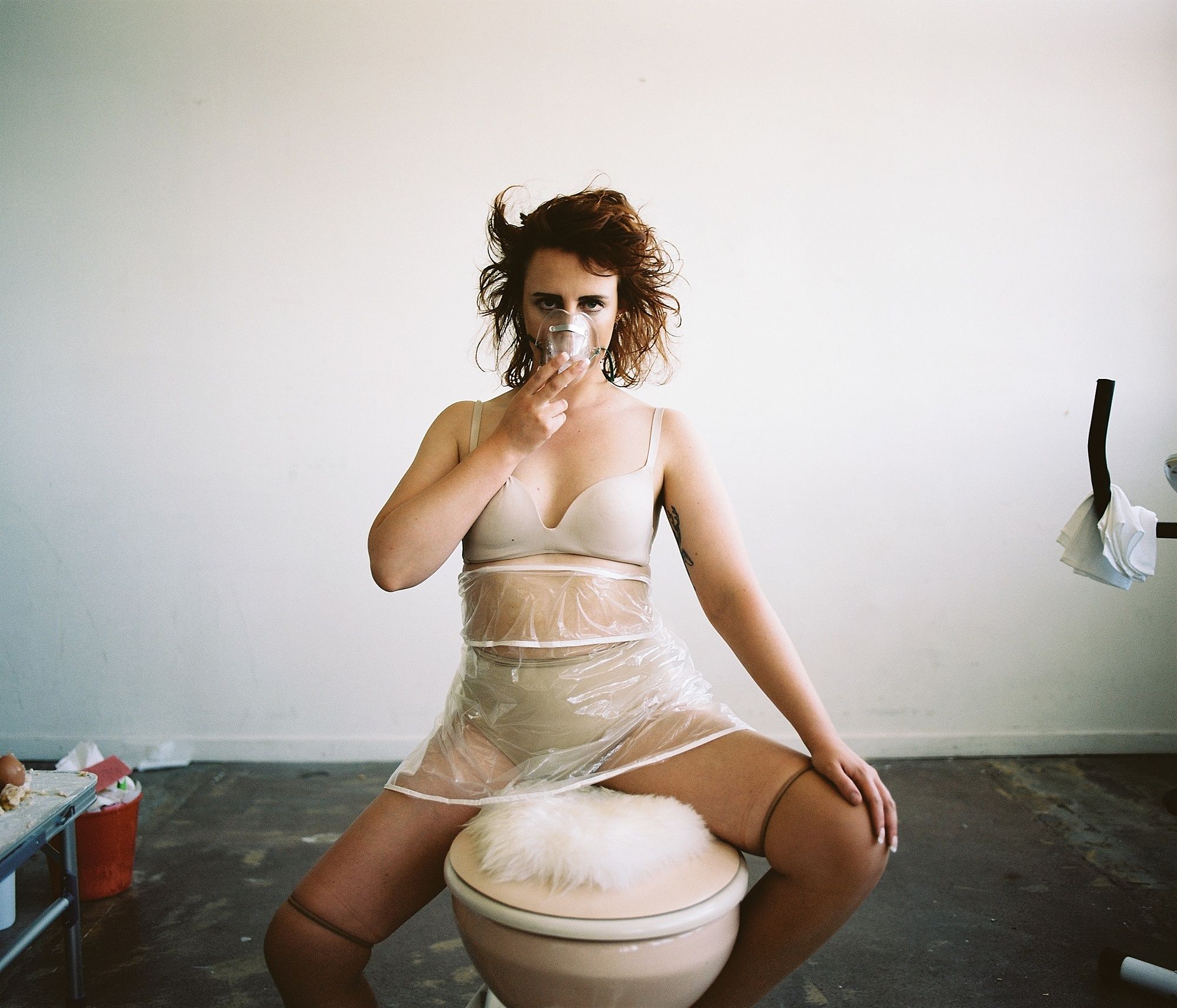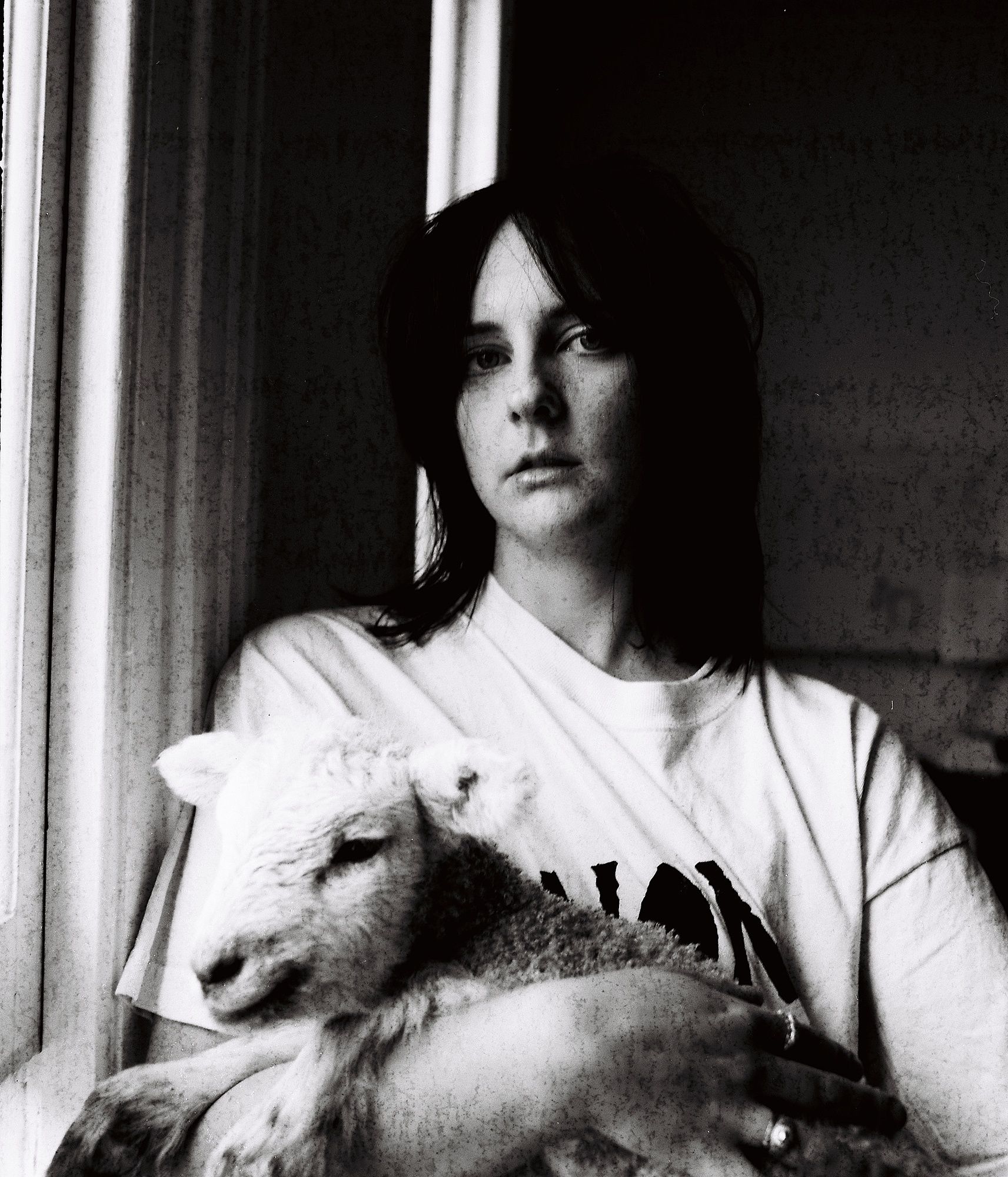Loose Canons: Frances Libeau
Francis Libeau, an interdisciplinary artist and sound designer for Q Theatre's Matchbox season of Medusa, unpacks the things that make her tick.
Loose Canons is a series in which we invite artists we love to share five things that have informed their work. Meet the rest of our Loose Canons here.
Frances Libeau (fka Claire Duncan) is an interdisciplinary artist from Tāmaki Makaurau, Aotearoa New Zealand.
Her sound designs, music, videos and writing bleed across territories of alternative music, theatre and art. Her work often explores the textural and semantic possibilities of collaging found/foraged and recycled sounds.
Recent design collaborations include Biljana Popovich's Synthetic Baby (2018), Physics Room; Sriwhana Spong's a hook but no fish (2018), Pump House Gallery/Govett Brewster Gallery; Madhan/Croft/Frankovich's Medusa (2018), Zanetti Productions; and countless collaborations with PICTVRE (Veronica Crockford-Pound).
Her ongoing recorded and performance work as i.e. crazy aka Maggie Magee (Non Compos Mentis, Muzai Records, 2017) examines the boundaries of civilised behaviour/sanity through similar exploratory modes of aural collage, and her participation in art-group Literal Fuck celebrates the potentialities for surprise and reinvention in performance contexts.
In 2015, Libeau wrote and directed the film documentary ode to musical self-expression, Land of the Long White Stain. Her writing has appeared in Le Roy, Pantograph Punch and more.
The Amator (or, We Need New Tools)
I’m largely untrained in almost everything I do. As a musician, sound designer, writer and video maker I simply began – and continue to begin again.
A workmate of mine recently loaned me her copy of a collection of writings by experimental Russian-American artist Maya Deren. She talks of the ‘amateur,’ the root of which comes from the Latin ‘amator,’ or ‘lover’ – meaning someone who does something for the love of it, rather than the notion of someone who is inferior, rookie. “Cameras do not make films; filmmakers make films,” says Deren. “The most important part of your equipment is yourself.”
Not only do I enjoy the perversely dialectical opposition of this idea, it happens to sum up well an ethos that has permeated my life’s bent toward creative expression. Experimentation, play, risk; growing up in public.
My road is not linear, nor exponentially progressive. I am not a craftsman who will refine my daily work to one point of pure precision. I have multiple paths, and as such, I need multiple tools. Words that used to mean one thing to me now taste bitter or flavourless, sounds that once felt urgent now fall limply through the air. In a climate of late capitalism, finance is God; and the economics of marginal creativity are slippery and precarious. My response is to be slippery too; shimmering like a fish through as many schools as will offer me passage.
Clarity is not the goal here. Nor is technical mastery. Risk is paramount. Failure is guaranteed. Success is whatever you make it.
Super-Technique-of-the-Animal (or, Deima Panikon)
If technical mastery is not the goal, what is? Related to The Amator, Italian theatre-maker Romeo Castellucci has an idea he calls the Super-Technique of the Animal, which articulates well what I love about performance.
“My goal is a technique that moves beyond itself – a super-technique resting on its own, vanished, agnostic and unprotected operation. Close to chance, to invisibility, as well as touching its opposite…Not being afraid to be wrong, but having a 'panicking fear' (deima panikon) of 'being there' on the stage.”
The super-technique involves a dis-education, and enough gumption to sit with the present moment on a stage and ride the knife edge of the endless now. I like to imagine Castellucci laughing at my efforts. It’s an impossible task – and all the more appealing for it.
Absurdity (or, Playing Chess with Death)
Antonin Artaud laughs at me alongside Castellucci. There’s a quote from The Theatre and its Double that rattles around my head a lot: “I call for actors burning at the stakes, laughing at the flames.”
I recite this line to myself like a mantra. The irony of clinging to something that promotes letting go makes me smile. The inherent madness in embracing a paradox echoes to me the absurd tension in making things; balancing on a knife edge between seriousness/humour, idea/action, technique/instinct, reality/fantasy, subject/object, performer/spectator, beauty/horror.
There’s a humour built into i.e. crazy, in particular, that is both necessary (as a means of surviving the performance) and also inherent in the existential tragedy of human expression and its constant failure to resolve itself.
This is a dilemma present in the works of some of my favourite makers. Samuel Beckett’s futile silent chase comedy aptly named FILM, his meandering, seamless Waiting for Godot, Ingmar Bergman’s valiant knight playing chess with his own Death in The Seventh Seal, Patricia Highsmith’s arrogant protagonists drowning in snails in more than one short story, and Franz Kafka’s Gregor Samsa resigning himself to life as a giant bug in The Metamorphosis. I find certain grotesque horrors hilarious, because of what they betray. Usually the person facing such a situation is suffering some kind of hubris, or was subjected to some terrible abuse, or maybe they just wore the wrong underpants that day. Humanity is a mess.
Aotearoa Gothic (or, A Piece of Yellow Soap)
We live across two big islands and lots more small ones. I’m fascinated by the creative ways people have revelled and reeled in the strange solitude of a sparsely populated, landlocked experience. The horrors of colonialism loom large in the New Zealand landscape. For Indigenous people, the injustice of an ancient way of life being seized upon and strangled without acknowledgement or apology persists, achingly. For Pākehā, the false promise of a ‘better’ life and the phantom Motherland haunting through the hills of Aotearoa, a sense of the Romantic sublime, but severed and cast aside, a waterlogged limb.
I think of the New Zealand Gothic as a kind of inverse/negative psycho-geography; less romantic sublime and more quiet terror; less Situationist ramble, more provincial disorder. The banal is charged with quiet terror, the surface cracking with repressed traumas that return, zombie-like, through generations.
For me, it’s Frank Sargeson’s A Piece of Yellow Soap, Alison MacLean’s Crush and Kitchen Sink, Vincent Ward’s Vigil. Sam Neill’s Cinema of Unease. The Mutton Birds’ A Thing Well Made. Tracey Slaughter’s Deleted Scenes for Lovers. James K Baxter’s Town Under the Sea. Patricia Grace’s Cousins. Ava Seymour’s Health, Happiness and Housing. Skeptics’ AFFCO. Sharpie Crows’ Golf Course/Mass Grave. Gloriavale. The Mount Victoria ‘Tooting’ Tunnel. The Topp Twins. The Ingham Twins. David Bain. Lori Watt. Lew Pryme. Jane Furlong. Hudson and Halls. Those who know me well will recognise this bent toward stories of marginal geographic and psychological spaces. This ilk of creative work relays our social and geographic landscape with weird, recurring threat; the horizon ominous yet unyielding with only ocean ahead.
The Tangent (or, Libraries of Babel)
My late-teenage brain was blown open by the discovery of Italo Calvino (courtesy of a dear friend, artist Selina Ershadi). I read non-fiction that fizzed and smiled with the images of poetry and the indulgences of fiction. His rich intertextuality drew me to a new mode of reading – one which led down tangents, alleyways, sidestreets, alcoves. Borges’ Labyrinths tempted me further into a world of fictional non-fiction, of assumed pseudonyms, of fabricated expertise.
It would only occur to me later that this sophisticated form of allusory collage is applicable everywhere. At every second, across social media platforms, different ideas and images rub up hard against one another, to surprising, disturbing effect – an online Library of Babel, spiralling hypermediated data in endless fractals into the long-fingered tendrils of global corporates.
My making across many media now intertwines a range of samples, sources and speech marks into a many-layered mesh of bricolage. Increasingly, my songs become sonic mash-ups of found sounds and pop-culture detritus. I make music videos from found footage, sound designs recycled from shitty phone field-recordings.
I’m less interested in making something ‘mine’ than assembling a bunch of ideas already sitting in the air. All kinds of artists have been doing this for far longer than I. Debussy composing music to sound like water. John Cage leaving the doors to the theatre open during a performance so that outside traffic could be heard. Dr Dre remixing Mr Postman. Sophie Calle’s Address Book. Anne Carson mashing up the myth of Herakles into a queer love poem. Form and function meet; the surface is the content; the process is the performance is the product.
Medusa runs from 24 October to 3 November at Q Theatre. Tickets available here.






